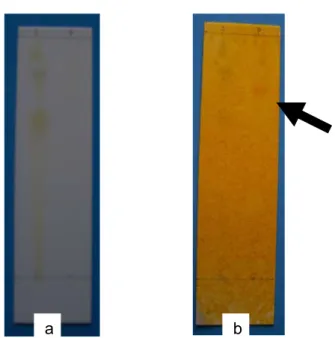CHEMICAL ANALYSIS OF Loranthaceae daendropthoe sp. BY THIN LAYER CHROMATOGRAPHY
Teks penuh
Gambar


Dokumen terkait
containing Alkaloid ananoin compound that can be used of natural larvacida. The aim of the
The objectives of this research are to determine the physical properties and to study the sound absorption properties of sound absorbing materials made of spent tea leaves filled
nardus leaves extraction yield higher citronella oil content as compared to stems and consist of different main chemical compositions between the two parts.. Apart from that, the
Keywords: Tapioca, water, glycerol, thermoplastic tapioca starch, FTIR, XRD Effect of Water Loading on The Chemical Structure and Mechanical Properties of Thermoplastic Tapioca Starch
It can be summarized that the physical properties and chemical composition of the fronds and leaves of nipah in these areas are similar except for the length between base and the first
Chemical composition, phytochemical constituent, and toxicity of methanol extract of brown algae Padina sp.. from Puntondo Coast, Takalar
A document containing references from various sources on the analysis of the chemical composition and functional properties of various legume
This research focuses on isolating, characterizing, and identifying the chemical compounds in Papuan nutmeg essential oil (Myristica argentea Warb) to determine its properties and